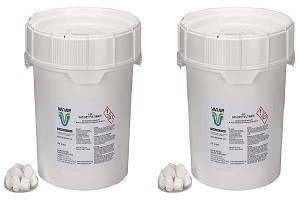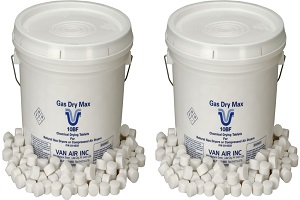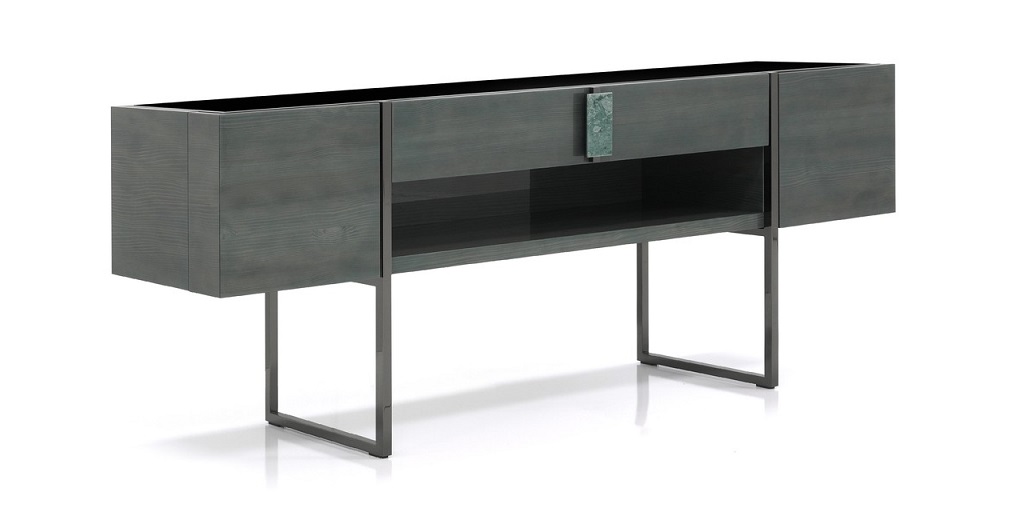
by tonystark | Oct 8, 2025 | Others
Not all dehydration systems are created equal—especially in the liquefied natural gas (LNG) industry, where performance standards are among the most unforgiving. Whether it’s upstream gas collection, midstream transport, or downstream processing, a natural gas dehydration unit is critical to keeping moisture out of the equation and operations running without interruption.
The Core Job of a Natural Gas Dehydration Unit
Natural gas must be dried before it can be transported, processed, or liquefied. In LNG applications, this is a matter of chemistry and safety. Moisture in natural gas crystallizes into ice or hydrates at cryogenic temperatures, which can cause line blockages, equipment failures, and serious operational hazards. A proper dehydration unit removes that risk.
These systems are designed to eliminate water vapor through various methods, but the two most common are:
- Pressure Swing Adsorption (PSA): Often found in twin-tower regenerative dryers, this method uses desiccants like activated alumina to adsorb moisture. One tower dries the gas while the other regenerates.
- Deliquescent Drying: A more passive method using tablets that absorb moisture and dissolve into brine. Ideal for lower flow rates or where electricity isn’t available.
In LNG facilities, where precision and reliability matter, PSA systems—especially explosion-proof models—are typically preferred for their capacity, consistency, and low dew point performance.
Where It Fits in the LNG Chain
A natural gas dehydration unit doesn’t only belong at the final liquefaction stage. In fact, it’s used in multiple spots across LNG infrastructure:
- Upstream Gas Gathering: To prep gas before compression and transport.
- Midstream Pipelines: To keep transmission lines free from corrosion and blockages.
- LNG Terminals: To condition instrument air and fuel gas within classified hazardous zones.
Explosion-proof regenerative dryers, like the HLSXG, are a smart solution for Class 1 Division 1 environments. These units deliver dew points down to -40°F, meet strict safety codes, and function reliably under harsh operating conditions. Their electrical systems are engineered to avoid spark generation—a must in volatile gas environments.
Efficient, Reliable, and Built for Harsh Settings
A key advantage of modern regenerative dehydration units is their ability to run continuously with minimal maintenance. With dual desiccant towers alternating between drying and regenerating cycles, they deliver dry gas around the clock—without needing operator intervention.
Also important is how these units manage purge gas. Instead of venting into the atmosphere, systems like the HLSXG route purge exhaust to a single coupling that connects to a vapor recovery unit or flare system, helping reduce emissions and improve site compliance.
And while glycol dehydrators have traditionally been used in gas processing, they come with drawbacks—fuel gas consumption, maintenance-heavy components, and emissions. In contrast, regenerative desiccant dryers are cleaner, quieter, and more cost-effective over the long term.
Supporting Systems in LNG Operations
Even in facilities that rely on molecular sieve systems for ultra-low dew point final-stage drying, regenerative natural gas dehydration units serve essential secondary roles. Whether it’s drying fuel gas to prevent flameout or conditioning pneumatic control systems, they provide operational stability at every level.
For LNG operators looking to future-proof their facilities, choosing the right natural gas dehydration unit means finding a system that balances safety, efficiency, and flexibility. Explosion-proof regenerative dryers like the HLSXG are purpose-built for these high-stakes environments.
To explore options designed for the LNG industry’s toughest demands, visit Air Vacuum & Process, Inc. to see what’s possible.
For more information about Compressed Air Dryer System and Silent Air Compressors Please visit: Air & Vacuum Process Inc.

by tonystark | Oct 8, 2025 | Others
Moisture may seem like a minor issue—until you’re running a plastics manufacturing line. A single spike in humidity can ruin a batch, compromise product quality, or cause delays that ripple across the production schedule. That’s where a regenerative desiccant air dryer becomes essential, especially in operations where precision is non-negotiable.
Why Moisture Control Is Critical in Plastics Manufacturing
In plastics processing, compressed air plays a vital role in everything from transporting pellets to powering pneumatic tools. But compressed air isn’t dry by default. It often contains water vapor that condenses when pressure drops or temperature changes—conditions typical in any industrial facility. When this moisture makes its way into the manufacturing stream, it can cause a host of problems:
- Surface imperfections – Blistering, bubbling, or cloudy finishes often trace back to moisture in the system.
- Weakened structure – Water molecules can interfere with the polymer chains during extrusion or molding, thereby reducing the product’s strength.
- Material clumping – In storage and transfer, hygroscopic plastic pellets can absorb ambient moisture, leading to inconsistent melt behavior or uneven coloring.
- Corrosion – Moisture doesn’t just affect the product—it damages your equipment. Corroded air tools, blocked lines, and damaged valves can all be traced to uncontrolled humidity.
All of these defects increase waste, downtime, and operating costs. That’s why many facilities turn to a regenerative desiccant air dryer to keep their compressed air supply as dry as possible.
What a Regenerative Desiccant Air Dryer Does
A regenerative desiccant air dryer removes water vapor from compressed air using desiccant materials like activated alumina or silica gel. What sets it apart is its twin-tower system. One tower actively dries the air while the other regenerates the desiccant, usually through a heated purge or pressure swing mechanism. This continuous cycle ensures consistent dew point suppression—even in high-humidity or high-throughput environments.
Compared to refrigerated dryers, which typically reduce moisture to around 35–40°F dew point, regenerative desiccant dryers can reach levels as low as -40°F or even -100°F. That’s critical in plastics production, where certain polymers require extremely dry conditions to process correctly.
Preventing Defects at the Source
A regenerative desiccant air dryer plays a preventive role in maintaining product integrity:
- Protecting pellet dryers – Resin drying systems rely on clean, dry air to properly condition materials before extrusion or molding. Any moisture in the air stream compromises that process.
- Preserving air-driven tools – Clean air extends the lifespan and reliability of pneumatic tools used in packaging, assembly, and handling.
- Maintaining process consistency – With a reliable dew point, there’s less fluctuation in melt flow index, part dimensions, and cycle times—key to quality control.
For manufacturers pushing high-volume output with minimal defect tolerance, the investment in a regenerative dryer often pays for itself through reduced scrap, improved consistency, and lower maintenance overhead.
Quiet, Continuous, and Clean
Modern regenerative dryers also operate with minimal interruption. Whether heatless, heated, or blower purge, these systems are designed for energy efficiency and quiet operation—two more factors that support productivity in plastics environments.
When it comes to plastics manufacturing, it’s not just about producing parts—it’s about producing consistent, defect-free parts every time. Moisture is an invisible threat, but it’s one you can control with the right equipment.
To explore regenerative desiccant air dryer options designed specifically for industrial applications, visit Air Vacuum & Process Inc. online. Their industry-specific solutions help you protect your product, your process, and your bottom line.
For more information about Automatic Drain Valve and Quiet Compressor Please visit: Air & Vacuum Process Inc.

by tonystark | Oct 6, 2025 | Others
You have likely seen this masterpiece before, though you may not know the artist. But you remember the emotion and the feeling the work gave you, no matter where you saw it.
Katsushika Hokusai’s The Great Wave off Kanagawa continues to captivate audiences worldwide, resonating across centuries, cultures, and artistic disciplines. Its dynamic depiction of a powerful wave, poised to crash over helpless fishermen, offers a profound meditation on the relationship between humanity and nature.
Yet, the appeal of this iconic image lies not only in its visual drama but also in its historical, artistic, and symbolic layers.
Humanity vs. Nature
At its core, The Great Wave tells a gripping story of human vulnerability against nature’s might. The fishermen beneath the wave symbolize the universal struggle for survival, a theme that resonates with anyone facing overwhelming challenges.
Unlike images that celebrate humanity’s triumph over nature, this composition underscores nature’s dominance. The wave is a force of awe and terror, with its claw-like arcs encapsulating a moment of imminent peril. This emotional tension makes the image not only visually arresting but also thematically timeless.
Hokusai’s Printing Methods
The wave’s visual elements are equally compelling. Hokusai’s mastery of ukiyo-e woodblock printing shines through in the crisp lines, bold colors, and intricate details. The use of Prussian blue, a novel pigment at the time, gives the wave its striking vibrancy and contributes to its enduring appeal.
The interplay of traditional Japanese aesthetics and Western influences, such as linear perspective and a low horizon line, creates a composition that feels both familiar and novel. This blending of styles reflects the cultural crosscurrents of the Edo period, capturing a moment when Japan’s isolation was beginning to erode.
A Part of A Greater Work?
Another layer of intrigue lies in its context as part of the series Thirty-Six Views of Mount Fuji. While the wave dominates the foreground, Mount Fuji, a symbol of stability and spirituality, anchors the composition in the distance. This juxtaposition of chaos and calm mirrors the duality of life itself, offering a deeper philosophical reflection.
The cultural journey of The Great Wave further amplifies its significance. Initially a popular print sold to Edo-period tourists, it transcended its origins to become a global phenomenon. Its introduction to Europe during the Japonisme craze of the late 19th century influenced artists like Claude Monet and Edgar Degas, who admired its flattening of space and vivid colors.
Claude Debussy’s La Mer drew inspiration from the print, and its reach has extended into modern times, appearing on everything from book covers to emojis. These days, people who love Japanese art often get The Great Wave poster as part of their home decor, as it is so iconic.
The Appeal and Value of the Wave
The wave’s symbolism has evolved alongside its widespread recognition. It is often evoked during times of natural disaster, such as the 2011 earthquake and tsunami in Japan, as a representation of nature’s overwhelming power.
Yet, it also serves more playful purposes, as the Great Wave poster is found in homes, or adorning tattoos, fashion, and advertisements. This versatility underscores its adaptability as a cultural icon, capable of conveying both profound and lighthearted meanings.
Ultimately, The Great Wave endures because it speaks to universal themes of power, resilience, and awe. Its ability to encapsulate an entire narrative in a single image, while inviting endless interpretations, ensures its relevance in a constantly changing world.
Hokusai’s masterpiece will continue to inspire and enthrall, proving that its waves will ripple through time indefinitely. If you want to bring the essence of Hokusai’s work into your home we recommend visiting the Museum of Fine Arts, Boston, where you can find Great Wave posters and other Hokusai gifts that pay homage to the artist’s work.
For more information about Art Note Cards and Art Christmas Cards Please visit: Museum of Fine Arts – Boston.

by tonystark | Oct 6, 2025 | Others
A toddler safe space heater offers one of the most practical solutions for keeping children warm in a setting that doubles as both a professional workspace and a family home. Unlike bulky floor units or noisy central systems, Envi wall-mounted heaters quietly deliver consistent heat while staying out of the way—and out of reach.
The Problem With Traditional Heaters in Child-Focused Spaces
Many caregivers start out using space heaters that are portable and inexpensive. But in a Small Family Child Care Home, the risks start adding up fast. A portable unit on the floor becomes an obstacle during playtime. Hot surfaces create potential burn hazards. And fan-driven models can be noisy enough to wake napping toddlers or overstimulate kids during quiet activities.
Not to mention, these types of heaters can be inconsistent. One room might be toasty while another is still cold. And let’s be honest: with toddlers in the mix, no one wants to be constantly adjusting dials or babysitting the heater throughout the day.
Why Wall-Mounted Matters
Wall-mounted convection heaters like the Envi solve many of these problems instantly. A toddler safe space heater designed to mount a few inches above the floor provides even, consistent warmth without cords to trip over or glowing elements to attract little hands.
For example, a slim profile heater blends into your room layout while freeing up valuable floor space—perfect for small group play, reading corners, or infant nap zones. Because these units warm through natural convection (not fans), they’re completely silent. That means nap schedules stay undisturbed, and you don’t have to compete with background hum when giving directions or reading stories aloud.
Cool to the Touch, Safe to Be Around
The key benefit here isn’t just efficiency, it’s safety. A toddler safe space heater should always stay cool to the touch. In Small Family Child Care Homes, where little ones are just beginning to walk, reach, and explore, that detail can’t be overstated.
Whether the heater is on for an hour or running all day in the winter months, you won’t have to worry about accidental burns. Wall mounted units like the Envi are equipped with a built in locking bar that secures the unit to the mounting clips, this means it can’t be knocked over, or pulled off the wall — issues that create real hazards with most floor units.
Better Air, Better Comfort
Dry air and overheating can become real concerns in a cozy space full of young kids. Some traditional heaters strip the air of moisture, which can lead to dry skin, irritated eyes, and respiratory discomfort.
Low-wattage convection heaters avoid that completely. They warm gradually and evenly without drying the air or stirring up dust. That’s a big win for children with allergies or sensitivities—and for caregivers who want fewer sniffles and complaints during the colder months.
Minimal Effort, Maximum Peace of Mind
One of the best parts of upgrading to a plug-in wall-mounted model is the simplicity. Most toddler safe space heaters plug into a standard outlet, install in under 15 minutes, and require no long-term maintenance. There are no filters to replace, no batteries to monitor, and no coils to clean.
For small home-based programs where you’re managing everything from lunch prep to activity rotations, that ease is a big plus. Set the temperature and go—no need to adjust it every time the door opens or someone moves to another room.
A Safer Way to Stay Warm
At the end of the day, keeping your home daycare safe and warm shouldn’t come at the expense of peace of mind. A toddler safe space heater makes sure your environment stays comfortable, your layout stays flexible, and your toddlers stay safe, all without adding to your daily stress.
If you’re ready to upgrade your setup, visit eheat online and explore space heaters designed for real homes with real kids.
For more information about Convection Heater and Space Heater Made In USA Please visit: Eheat, Inc.

by tonystark | Oct 3, 2025 | Others
When it comes to first impressions, the foyer speaks volumes, and few pieces say “well-designed home” like a beautiful modern contemporary console table. These slim yet striking surfaces are more than just filler for empty walls. They’re functional, decorative, and incredibly adaptable, making them a favorite for both designers and everyday homeowners alike.
Here are five relatable reasons why console tables, especially modern ones, remain an attractive addition to any entryway, and why you might just want one in other rooms, too.
They Make the Entryway Feel Intentional
You walk through your front door and immediately see… a blank wall? That’s where a console table comes in. These pieces give your foyer structure and meaning, like a “welcome mat” for your design style. A curated setup with a vase, mirror, and tray instantly elevates the space and helps it feel complete. It’s the kind of detail guests notice, and one that makes coming home feel more personal and elevated.
They’re Slim, So They Fit Practically Anywhere
Modern contemporary console tables are designed with urban living in mind. Their narrow build makes them ideal for tight spots like hallways and small foyers. Instead of crowding the space with bulky furniture, a sleek console table adds presence without overwhelm. It’s the balance of style and scale, and it works whether you live in a studio apartment or a spacious home.
They Catch the Chaos Before It Spreads
Keys. Sunglasses. Mail. Console tables give you a designated spot to drop everyday essentials before they take over your kitchen counters or bedroom side tables. Add a stylish bowl or a shallow tray and suddenly your clutter looks intentional. Plus, when you’re rushing out the door, everything you need is right there.
They’re an Instant Style Statement
Modern console tables don’t just serve a function, they look the part, too. With finishes like high-gloss lacquer, smoked glass, marble tops, or sleek metal frames, they bring elegance and edge into your space. Whether you lean minimalist, industrial, or organic modern, there’s a console table out there that reflects your taste while tying your entryway together.
They Set the Mood for the Whole Home
Think of your entryway as the opening scene to your home’s design story. Console tables help establish the tone: calm and serene, bold and artistic, or somewhere in between. Paired with a mirror, sculptural lamp, or art piece, they create a curated vignette that feels like a warm “hello” every time you walk in.
Console Tables Beyond the Foyer
What makes console tables even more worth investing in is their versatility. Beyond the entryway, these pieces adapt to your needs:
- Behind the sofa as a slim display surface
- In the dining room as a modern sideboard
- In the bedroom as a vanity or media shelf
- Even in a home office for layered storage
They’re the kind of furniture you don’t have to move out as your style evolves.
If you’re looking to bring intention and elegance into your entryway—or anywhere else—a modern contemporary console table is a natural choice. Cantoni offers a curated selection of high-design console tables that balance form, function, and timeless appeal. Explore their collection online and find the perfect piece to welcome you home.
For more information about Modern Recliner Chair and Modern Furniture Dining Room Please visit: Cantoni.





